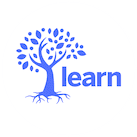This is Part 2 of a two-part post. You can read the first part here.

My last post described the creation stages and final product of our first year in what we called the Self-Paced Blended Learning project. This post is a compilation of the reflections on the experience from the teacher point of view, so even though I use the pronoun “I”, I’m speaking on behalf of the teaching staff.
The Creation Stage:
Simply put, this stage was a huge amount of work, and required some dedicated time through holidays, just to meet the deadlines. But the benefits far outweighed that.
I had thought it would be a simple matter to take all of the digital content we’d all created over the years for our own courses (yes, we create our own and we have SO MUCH STUFF) and rearrange it all in one online space, in a visually appealing and easy-to-understand way. Hilarious. Adorable even.
When you have to add in context – those crucial bits of text that make it possible for a student aged 15-ish to keep motivated, to understand what to do, when to do it, where to put their work, and know that a real human being cares whether or not they are ok, you quickly discover all kinds of holes. You also discover just how much just-in-time on-the-spot teaching and spontaneous learning happens during the live class! We all ended up creating many new resources to make the Self-Paced experience as close as possible to the Real-Time one.
At this point it is clear that even if no one had taken the SPBL course, this process would’ve nevertheless ended up benefiting everyone – in the short term and the long term:
- Because of the SPBL deadlines, I was prepared and ready for my Real-Time classes an entire month ahead, which I had NEVER been in my entire career. That was a double-edged sword, mind you, because it freed my mind to come up with lots more spontaneous ideas during class, which in turn meant more SPBL stuff to include in the weekly meetings… not a vicious cycle, but a self-perpetuating one!
- As I mentioned before, a lot of holes got filled even for my Real-Time students. They benefited from much more thorough and frequent checks-for-understanding, as well as new and better VoiceThreads that otherwise wouldn’t have been made, at least not all in one year.
- Writing those Introduction & Why Are We Learning This? blurbs at the beginning of each unit gave me a deeper appreciation for the content. I’ve never been comfortable answering “When are we ever going to use this?” with “On the final exam”, but neither have I ever given the question much deep thought. It made me appreciate how these things fit into the bigger picture. I should have been doing this all along.
- The big picture – I had never had the opportunity to look at the whole course in one spot before, and as it took shape over the year, many connections between topics were suddenly revealed to me. Orthogonal vectors & trigonometric points. Hyperbolas and rational functions. The linear thread through EVERYTHING – every single kind of equation we learn how to solve gets turned into some kind of linear equation! Who knew?
- Also big picture, but for next year: The yearly overview makes it easy to schedule certain routines, like “Always, Sometimes, or Never?” or “Which One Doesn’t Belong?” on a regular basis, instead of whenever I happened to have the presence of mind to think of it.
The Weekly Student Meetings:
Everything that happened in a meeting could also have happened in a real- time class, but it’s very different in a one-on-one. Put a student in a class of 20-30 people, in which the teacher says “How are you today?” Then put that same student in a one-on-one meeting with the same teacher asking the exact same thing, and those words will have a profoundly different impact. Words sound entirely different, indeed the message they convey IS entirely different, when you know they are directed at you and only you.
You might think that the amount of time the SPBL students spent on their own made the format rather impersonal and bereft of human interaction, but the exact opposite was true. First of all, in our weekly meetings, we’re going over one person’s work, focusing on exactly what they and only they need, as opposed to the usual showing of all the solutions to everyone, regardless of what kind of results they got.
Moreover, the one-on-one meetings make it impossible to hide, impossible to not make your personality known. By contrast, in an online synchronous class, where there is no body language to colour everything you say, it’s the relatively rare student whose personality is accurately and fully transmitted to the other people online. Obviously, the teacher is an expert at that, but most students would rather remain as invisible as possible, choosing to text their comments rather than use their microphone. Of course this is not even remotely possible in the weekly meetings. It was nice to not be the only one using their voice for a change.
The agenda for each meeting was set by the teacher, and even though there were plenty of opportunities for the student to add his or her own items, it felt rather teacher-driven. Since SP students are required to be more active participants in these one-on-one sessions, we’re hoping next year they will be the ones driving the meetings.
The meetings, along with the friendly tone of the blurbs and instructions scattered throughout Sakai, were hopefully enough to make the whole experience human for our inaugural students. It’s hard to imagine anyone being able to complete a course that only involves automated interactions, in which no one is invested emotionally or even intellectually. Teenagers especially need to know someone cares about their success, even if they themselves get discouraged and lose motivation.
The Overall Experience:
I was excited about this project when we first started talking about it, then when we were in the thick of it I got a bit discouraged, because it really seemed at one point like the content was too complex to be covered in an almost exclusively asynchronous way. I turned a corner about halfway through the year, when I began making actual slides for my meetings, and when the students started settling into the routine. It really helped when they did well in their midterms (as well or better than my Real-Time students). That was when it stopped feeling like an experiment and started to feel like an exciting new direction for LEARN. As is always the case with everything LEARN does, it all comes down to the students.
If it works for them, we’re in.




